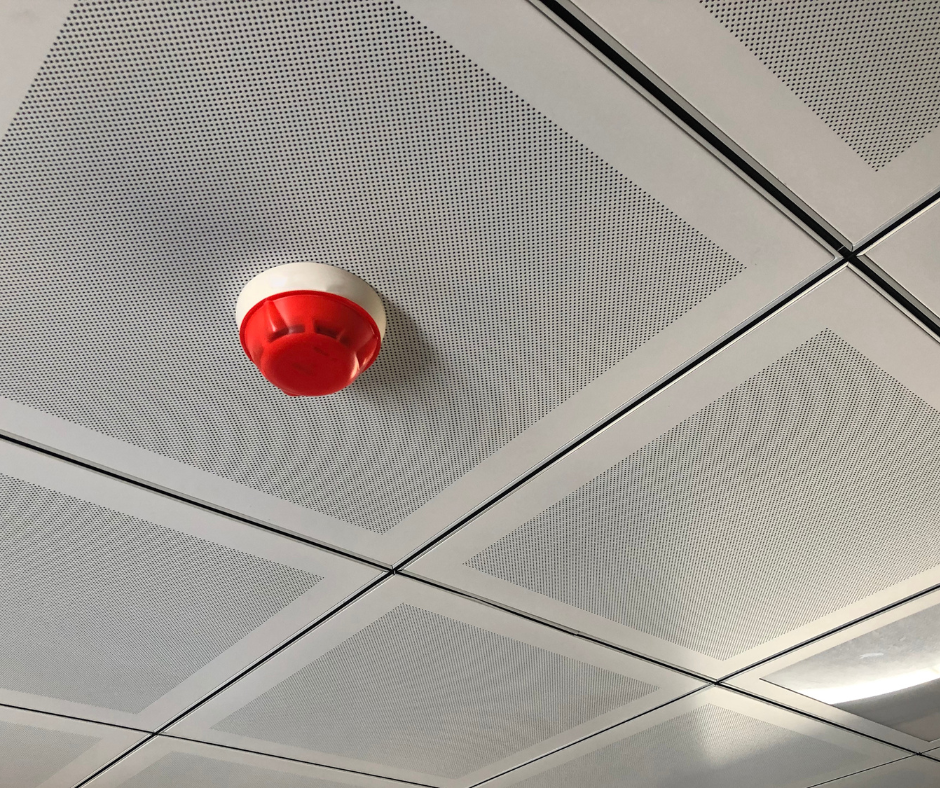Fire detection and prevention, like many industries undergoing transformation from new and evolving technologies, are no exception.
We looked at the key fire prevention trends in 2023 and found they are driven by advances in technology and the economic pressures on operational efficiency.
Increasing Recognition of Wireless Technology
Wireless devices are a fire prevention trend that is becoming increasingly popular. They are easy to install, as fitting requires no upset to the structure of the building. Wireless devices require no addition to existing wiring systems which make them eminently suitable for historic buildings and retrofits. Additionally, they can be fitted to areas where it is impossible to shut down such as critical areas of hospitals. They offer significant value on return on investment and an increase in operational efficiencies.
For example, fitting a wireless smoke detector involves attachment and establishing communication with the remote system.
Increased Connectivity and Building Management Systems (BMS)
Significant future growth in this area of fire detection and prevention is expected..
Connectivity allows integration into existing systems. More and more building management systems and smart buildings are being rolled out. In these systems, It is relatively easy to integrate the fire prevention and alarm system into the building’s management system.
For example, it allows easy scheduling of prevention inspections. Also, in the event of a fire, it can shut down the HVAC system and implement the activation of dampers. Consequently, this prevents smoke and fire spreading. In the event of a fire, the system can automatically open escape routes and activate emergency direction lighting.
Cloud and Internet of Things (IoT)
IoT, or Internet of Things, refers to:
“The collective network of connected devices and the technology that facilitates communication between devices and the cloud, as well as between the devices themselves.”
This technology is becoming increasingly popular in fire prevention. It allows real-time monitoring of systems. The technology also allows for remote access and the capability to analyse data. This data analysis can detect trends and anomalies to allow the fire prevention and detection system to be more effective.
Artificial Intelligence
No discussion on trends in any field would be incomplete without referring to Artificial Intelligence (AI).
Systems will increasingly be enabled to identify risks and detect and warn of fires earlier. AI combined with BMS, IoT and increasing connectivity will also mean a reduction in false alarms.
Fire detection systems are leveraging intelligent analytics and machine learning algorithms. These can analyse patterns in data and accurately detect incidents. These early warnings allow stakeholders to react promptly which minimises losses and mitigates the consequences of incidents.
Advances in Sensors and Detectors
Advancements in sensors means that accuracy and response is increasing thereby reducing false alarms. These advances in technology include video smoke detection, multi-sensor detectors, flame detectors, and aspirating smoke detection.
Increasing Installation of Addressable Fire Detection Systems
Addressable fire alarm systems are systems in which all fire and smoke detection devices are connected and communicate both with each other and with a central control monitoring location. Control personnel can then identify the location or “address” where the initial detection occurred.
Increasing implementation of these systems provides more precise location information of fire incidents. Assigning a unique address to each detector or device in the system gives its position. Therefore, the location of the incident is immediately known.. This enables faster identification of the fire’s location, aiding in quick response, both evacuation and deployment of firefighting equipment.
Increasing Demand for Industrial Fire Detection
Manufacturing, warehouses, power generation plants and other industrial premises have shown an increasing need for fire prevention and detection systems. These facilities often have unique requirements in terms of spatial coverage, as well as distinctive fire risks, such as flammable materials, high-temperature processes or high value items, requiring specialised fire detection solutions.
Reducing False Alarms
False alarms are costly, disruptive, and can lead to complacency in responding to genuine fire incidents. Think evacuation necessitated by a canteen toaster triggering an alarm. There are increasingly drivers to develop fire detection systems to reduce false alarms using improved technologies such as BMS integration, connectivity and IoT.
New technologies and improvements on existing systems are continuously emerging. This is making building managers, facilities managers, safety and fire prevention officers and installers lives easier through simpler installation, more accurate detection, more intuitive system operation and greater integration.
Maximising these benefits now and into the future makes it vital that companies understand the potential offered by modern fire detection systems, which in turn requires specialist expertise.
We recommend engaging reputable partners who understand the technology and its features and capabilities for your fire prevention needs. Investing now in intelligent designs and equipment will improve your fire protection and future-proof your system.
Our team of professionals at Firebrand Group take pride in the quality of our work as it is not only passion that drives us, but the knowledge that we are saving lives and assets by educating, training and protecting our clients and their businesses.
We are a unique and fully comprehensive fire and security company, offering a wide range of products and services catering for the Commercial and Industrial Property sectors in Southern Africa.
Contact us to discuss your fire prevention projects and requirements.





